#Charlotte Murchison
Text
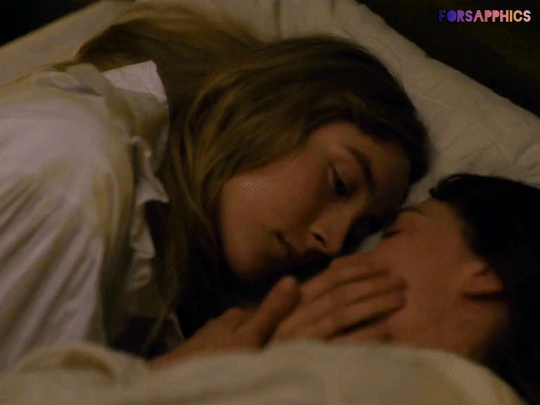

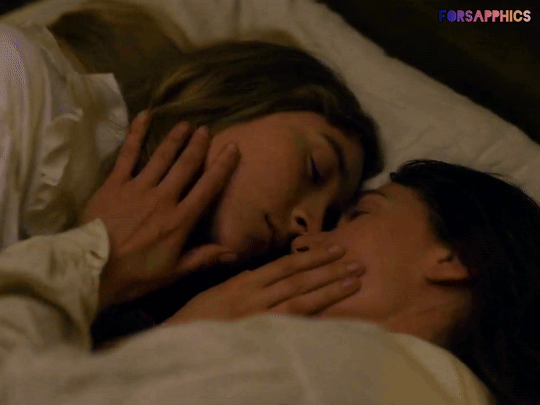

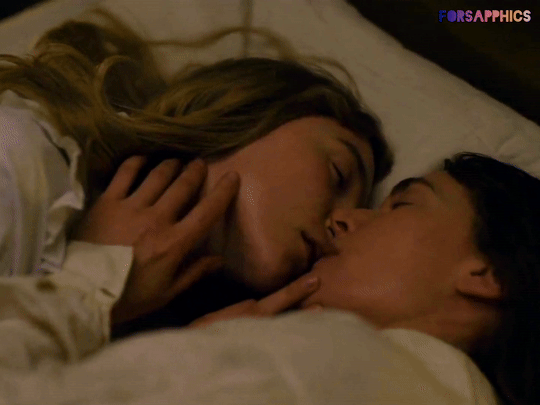
AMMONITE (2020) — dir. Francis Lee
#ammonite#francis lee#mary anning#charlotte murchison#kate winslet#saoirse ronan#wlw#wlw romance#wlw love#sapphic#sapphic romance#sapphic love#sapphics#lesbian#women#filmedit#televisiongifs#filmgifs#dailytvfilmgifs#dailytvwomen#dailytvsource#dailytvedit#tvarchive#tvgifs#tvsource#filmblr#cinematicsource#fyeahmovies#userfilm#lgbt
103 notes
·
View notes
Text
Charlotte Murchison in Ammonite be like:

#ammonite#charlotte murchison#mary anning#saoirse ronan#kate winslet#ammonite 2020#ammonite movie#wlw#period drama
56 notes
·
View notes
Text

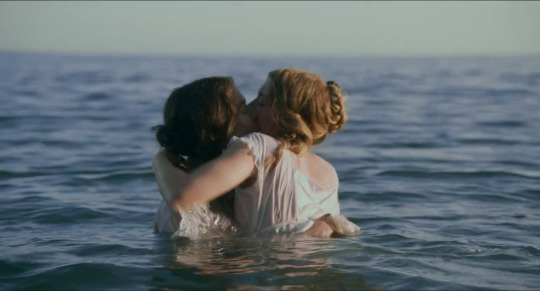
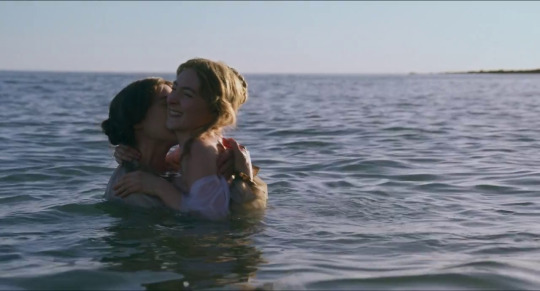
88 notes
·
View notes
Text



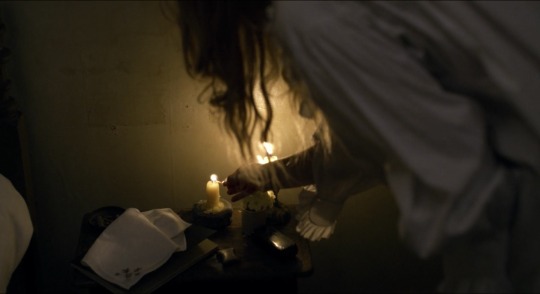

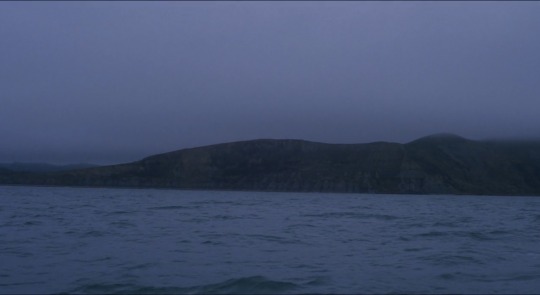
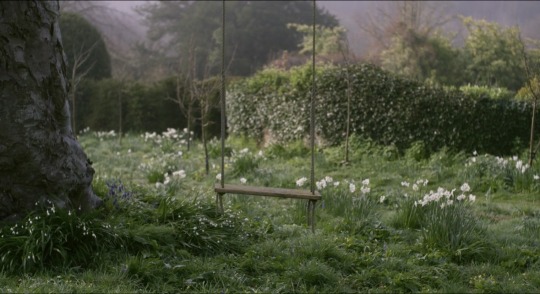



ammonite (2020) dir. francis lee
78 notes
·
View notes
Text

September 2020. Not to be confused with the Nicola Griffith sci-fi novel, the Francis Lee film AMMONITE is a slow-moving, grey drama, positing a romantic and sexual relationship between paleontologist Mary Anning (Kate Winslet) and Charlotte Murchison (Saoirse Ronan), who later became a noted geologist. (They were friends in real life, although the movie's depiction of their relationship is speculative.)
Like the very similar PORTRAIT OF A LADY ON FIRE, the story wants to make a feminist statement about the social and professional marginalization of women (Anning is frustrated that the members of the Royal Geological Society — which she isn't eligible to join — are getting great mileage out of her work without compensation or credit, as she lives hand to mouth selling fossils and shells in a little shop), but it's also determined to separate its feminist thesis from socioeconomic class in a way that ultimately feels very uneasy.
Winslet is quite good, but the script doesn't ever really get into Anning's head, so her two main modes are prickliness and repressed wlw "I am, regrettably, attracted to you, so I must ask that you immediately go far away and never speak of this again." A subplot about Anning having previously had a fling with an older woman (Fiona Shaw) feels underdeveloped, and while the film centers on a particularly vivid sex scene, its version of the Anning-Murchison relationship isn't really convincing. It also ends on an odd note that doesn't seem to jibe with the fact that the real women remained friends for most of their lives, if more in correspondence than in person. CONTAINS LESBIANS? Indeed. VERDICT: If you're not just watching for that scene, it's typical underwhelming bourgeoisie art house filmmaking.
#movies#hateration holleration#ammonite#ammonite film#francis lee#fiona shaw#kate winslet#saoirse ronan#mary anning#charlotte murchison#wlw#lesbian movies#i was extremely unimpressed with portrait of a lady on fire#which is so willfully disinterested in the obvious class divide between the characters#that i kept wanting to throw something at the screen#this and mare of eassttown do at least reassure me#that winslet *can* in fact act and the regime was just a weird lapse#that the film could have also included a sex scene#between kate winslet and fiona shaw#and chose not to do so#should also be counted against it tbh
2 notes
·
View notes
Text

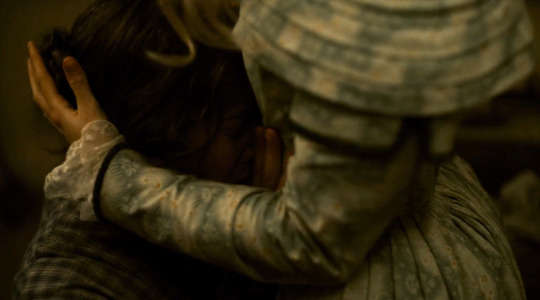
Ammonite (2020)
#ammonite#ammonite 2020#mary anning#kate winslet#charlotte murchison#saoirse ronan#lesbians#the movie was. a movie but this scene >>>>>#i just love when women
4 notes
·
View notes
Text
Charlotte: You can't keep sleeping in that chair. You need your rest. I've taken your bed for too long.
Mary: Did you want to go back to the hotel?
Charlotte: No. Unless you want me to?
Mary: No.
Charlotte: We should share the bed.
#mary x charlotte#ammonite#lesbian movies#lesbian characters#wlw#wlw love#saphhic#sapphic#sapphic characters#sapphic movie#mary anning#charlotte murchison
2 notes
·
View notes
Text
Family Porn Night: A Movie Review
As the opening titles come on screen, we hear but don’t see the sound of water sloshing in a bucket, being wrung out of a rag, heavy breathing, scrubbing. The titles fade and we see a woman, on her hands and knees, cleaning the floor of what we eventually learn is the British Museum. We hear footsteps, the sharp bark of a man saying, “Move!” as he and several others, carrying a fossil on a stretcher, tramp across the floor she has just cleaned. On the fossil we see a handwritten tag that reads “Sea Lizard found by Miss Mary Anning Lyme Regis.” The man in charge harrumphs, pulls the tag off, and replaces it with a tag that says “ICHTHYOSAURUS LYME REGIS Presented by H. Hoste Henley Esquire.” He has written Mary Anning out of history.
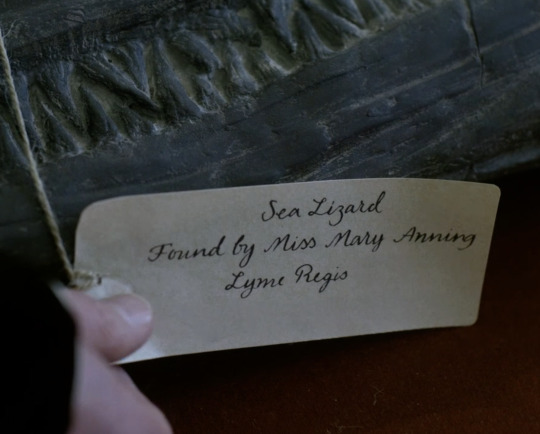

Ammonite is writer/director Francis Lee’s attempt to write Mary Anning, and queerness, back into the world of 1840s Britain. The plot is a simple romantic drama with an enigmatic ending. Simply put, Mary Anning falls in love with Charlotte Murchison but chooses to remain alone rather than give up her career by moving with Charlotte to London. The complex beauty of the movie comes from Lee’s subversion of audience expectations as well as some traditional film-making procedures. But how well he succeeded is still up for debate. The movie flopped at the box office, grossing under $1,000,000 world wide, failing to recoup the $3,000,000 distribution rights, let alone the $13.4 million in production costs. Carson Timar of “Clapper” wrote, “This is a bland and empty feature that feels like an ancient fossil void of any passion or substantial emotion” (Timar, 2020). With movie darling Kate Winslet in the lead and rising-star Saoirse Ronan playing opposite her, the lackluster reception is surprising. Does Ammonite, like Moonlight, prove that queer films need to be sexless to be successful (Lodge, 2017), or can we ascribe Ammonite’s box office bomb to other causes? I believe the erotic scenes are only part of the answer. While I disagree with the Rotten Tomatoes reviewer who said, “Simply out [sic], Ammonite commits that cardinal sin of being truly boring” (Andrew L., Ammonite, 2022), the slow pace likely contributed to Ammonite’s poor, reception sealing Ammonite’s fate as a “perfectly respectable, eminently professional slice of prestige arthouse” (Clarke, 2021) doomed to accrue financial losses. The other variable is not lesbian eroticism per se but rather lesbian eroticism scripted by women for the female gaze. In other words, two of the components that Lee uses to queer cinema are the very things that make it a failure in the public sphere.
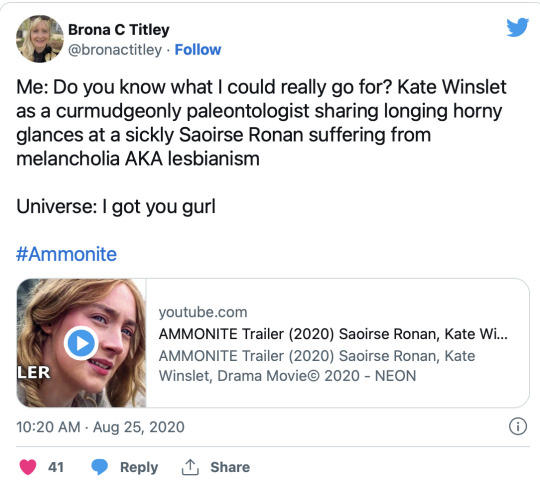
In Ways of Seeing (1972), John Berger writes, “Seeing comes before words…It is seeing which establishes our place in the surrounding world” (p. 7). Lee builds Mary Anning’s rocky world slowly, introducing the audience to her visually before any words are spoken. Although this is the well-trodden territory of a period romance, this is a romance that reimagines history. Mary Anning was a real person from Lyme Regis, UK, who sold fossils (called ‘relics’ in the movie) to the British Museum beginning at age 11. But there is no evidence of her having a love interest, gay or otherwise. Some of Anning’s descendants have questioned Lee’s manipulation of her story, which highlights the problems with “outing,” or ascribing queerness to public figures. Posthumously attributing identities to people may be a tempting way to queer the past by showing “the world that many widely admired and respected men and women are gay” (Duggan, 2006, p. 153), but it can be problematic to apply a modern understanding of queerness to people who cannot confirm or deny those identities and who may or may not have accepted our definitions. In other words, even if Anning had engaged in romantic liaisons with other women, she may not have seen those relationships as queer, either in the sense of their being gay or out of the ordinary. Lee attempts to “honor the complexity of [Anning’s] differences” (Duggan, 1991, p. 155) by building a rich and textured world that includes multiple ways of forming relationships. Even while I acknowledge that “outing” Anning may be problematic, I still find joy in the sapphic world Lee imagines.

Lee’s femme-centered world doesn’t limit gender expression. Mary is a complex character, outwardly mirroring the coldness of her Lyme Regis beach but with a depth of feeling we catch in glimpses, most often through Winslet’s uncanny ability to convey emotion without speaking. Mary plays with gender performance, but retains her essential womanness, subverting early Hollywood’s “gender-inversion stereotype” (Bernshoff & Griffin, 2004, p. 7). She smokes and swears frequently, has dirty fingernails and armpit hair (appropriate for the time but not for Hollywood). When engaged to take care of Charlotte, who has “melancholia,” Mary says, “There looks to be fuck all wrong with you to me” (0:28:30). She genuinely loves finding and cleaning fossils. When Charlotte, who has recently lost a baby, asks Mary if she has children, Mary replies, “I have my work. I don’t need children as well” (00:51:38).

As the movie progresses, Lee reveals Mary’s tender (feminine) side, showing her caring for a sick Charlotte and, at one point, wearing a dress and perfume to attend a recital with Charlotte. After Charlotte returns to London, Mary receives a letter from her. Before opening it, Mary lifts it to her nose hoping to catch the perfume Charlotte wore.

Charlotte originally acts as a more traditionally feminine counterpoint to Mary’s masculinity. She wears bonnets and bows, black to show mourning, and delicate heeled shoes. She’s weak and pale from what her husband calls “melancholia” but which could more honestly be called depression, either from the loss of a baby or the pressure of passing as heterosexual. Her angst doesn’t last long. Within a few scenes, Charlotte sets aside her expensive clothing for rugged boots to better accompany Mary on her morning fossil huts. Color comes back into her cheeks, she laughs more frequently, and she fully engages in Mary's work. Charlotte’s awakening coincides with her temporary move from London to Lyme Regis while Mary simply is regardless of her location. This juxtaposition has been noted by Karl Schoonover and Rosalind Galt in Queer Cinema in the World (2016), “Some people have to travel to express their sexuality and/or gender, and others stay home” (p. 77).
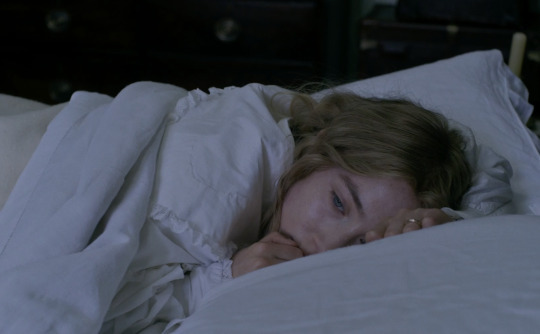

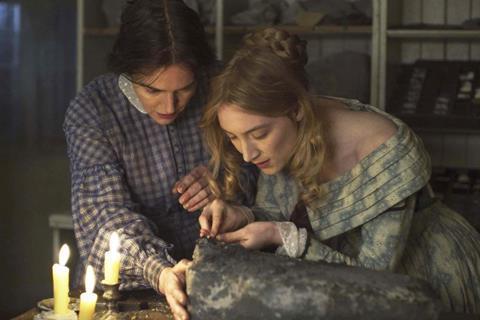
Lee contrasts elements in order to show how the women grow closer while retaining their core identity. While lying in bed together, Charlotte says, “Say it again.” Mary then recites a limerick:
There was a young woman named Sally
Who loved the occasional dally.
She sat on the lap
Of a well-endowed chap
And she said, ‘Oh, you’re right up my alley” (1:15:45).
Charlotte smiles, having let go of some of her feminine-coded sensibilities, while Mary, nude and vulnerable, curls trustingly next to her.

In a similar contrasting scene, Mary wades into the white-cap waves, turns, and waits for Charlotte to join her. Charlotte slowly walks out, frightened. She reaches Mary, who grabs her around the waist and smiles. Charlotte clings to her, still afraid, but feeling safe in Mary’s arms. This scene is the only time we see Mary laugh, and her joy mirrors the bright sun and warm filter unusual in this movie. Here, Mary both protects and pushes Charlotte, never demanding Charlotte change but offering help if Charlotte chooses to take it.
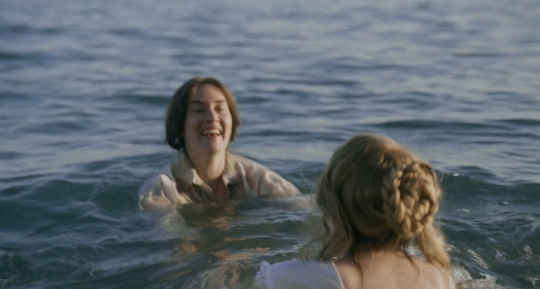

Two intimate scenes in the movie show just how transformative Lee’s film-making is. Rather than hire an intimacy choreographer, Lee, Winslet, and Ronan scripted each sex scene by themselves, relying on open communication and the trust they had in each other. These aren’t the “throw her up against the wall with no foreplay” scenes so common in heterosexual sex scenes, nor are they the “soapy shower and giggling college girls” lesbian scenes meant for the male gaze. Instead, Ammonite’s “staging of sexuality, gendered embodiment, and nonheteronormative sex” (Schoonover & Galt, 2016, p. 11) successfully disrupt heteronormative ideas about how sex happens, who enjoys sex, and how they enjoy it.

“Don’t take no for an answer,” seems to be the mantra in many erotic heterosexual scenes, but the first erotic scene in Ammonite queers cinema by pausing the action mid-point. After Charlotte kisses her, Mary kneels in front of Charlotte. Before going further, she waits, staring up at Charlotte until Charlotte raises her own skirts in enthusiastic consent.
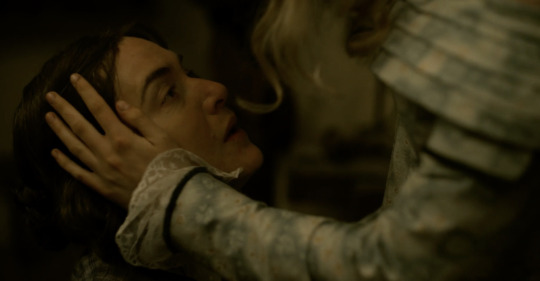
The final erotic scene queers cinema by subverting audience expectations. The night before Charlotte is to return to London, they lovingly caress each other’s faces. Noses touching, they gently kiss. As the scene progresses, they each guide the other’s hand, sometimes moving the hand to their own pudendum and sometimes away. Lee uses close camera angles, focusing on how the women’s bodies move together. The camera stays on each woman’s face as she climaxes. These are women showing each other how they want to be touched. Each woman confidently directs the actions of the other while asserting her own right to pleasure.
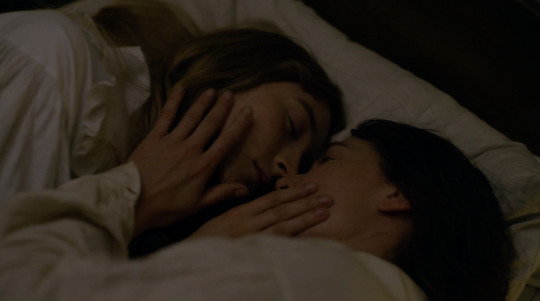
Both erotic scenes are enigmas in the movie industry: female pleasure for a female gaze. Per Schoonover & Galt, cinema is “an apparatus of desire, endlessly reconstituting what Jacqueline Rose called sexuality in the field of vision” (2016, p. 11). Eroticism scripted by women, focusing on how women experience pleasure, queers film in a uniquely feminist way; it uses “the potential of the erotic to remake the cinematic desire machine” (Schoonover & Galt, 2016, p. 11) reflecting the sapphic world Lee has created. I argue that the initial sex scene with a focus on enthusiastic consent and cunnilingus is a “counterpublic logic of visibility” that queers media by “extending representation beyond mainstream fantasies about white femme lesbians” which is “achieved in and through sex acts” (Schoonover & Galt, 2016, p. 12). Both erotic scenes, as well as other hinted-at but not seen moments, occur in Mary's home or on Mary's beach, "locating lesbian desire in a domestic setting and turning to familial intimacies as a place where women might find fulfillment beyond the strictures of marriage" (Schoonover & Galt, 2016, p. 19). Once the women are in London, in Charlotte's male-owned home, the intimacy (physical and emotional) falters and dies.
Gender expansiveness and eager consent are not the only way Lee queers cinema. We learn that Mary had a relationship with another woman in her town, Elizabeth Philpot (played by Fiona Shaw), which ended when Mary’s father died. Elizabeth acts as an oracle, guiding Mary in her relationship with Charlotte and foreshadowing the end of that same relationship. When Mary’s mother, Molly (played by Gemma Jones), dies, Elizabeth visits Mary and says, speaking of their past romance, “I wasn’t sure I could live up to you. Or your expectations of me…You seemed to do everything you could to be distant…It seems your Mrs. Murchison has been able to unlock something in you I couldn’t…” (1:34:16). Here, Elizabeth references the softness Lee showed in the limerick and beach scenes. It’s also vital to note that neither woman seems to have faced ridicule because of their relationship, nor do they seem to have kept it particularly quiet. I appreciate seeing a lesbian relationship that doesn’t double as a morality play.

Mary follows Elizabeth’s advice and accepts an invitation to visit Charlotte in London. From this point on, Lee relies more heavily on language and sound to convey how small and out-of-place Mary is. This sudden cinematic shift undermines the queer worlding I found so lovely in the first two-thirds of the movie.
At London port, bodies (all of them male except hers) are in constant motion. They press around her while they yell to and at each other. We’ve lost the cool tones of Lyme and found harsh sunlight. Lee’s feminism is not subtle. If "(queer) film theory is always a feminist project" (Schoonover & Galt, 2016, p. 11), Lee hits the brief, but he does so with a sledgehammer.

At Charlotte’s house, Mary opens a curio cabinet containing fossils she helped Roderick Murchison (played by James McArdle) find. The tag on one of the fossils reads, “Cornu Ammonis. Dorset Coast. Miss Mary Anning.” Taking it out, Mary notices the last line has been pasted on top of the original line. Pulling it back, Mary reads, “Mr. Murchison Esq.” Lee doesn’t just allude to his correction of the historical record, he screams it.

The breakup scene between the two women is similarly heavy-handed. Charlotte shows Mary to a room she has decorated for her “so we can be together always.” Winslet does an excellent job conveying a parade of emotions, but the ensuing dialogue lacks finesse and undermines the acting prowess of both Winslet and Ronan.

Mary doesn’t directly answer Charlotte, instead saying, “I really shouldn’t…I wanted to see my relic in the British Museum today….”
When Charlotte expresses dismay and repeats her offer to provide Mary with a new home, Mary says, “You presumed I’d just be fitted into your life here, like one of my relics in your fine glass case…Will you label me, too?” (1:47:45). Charlotte insists, “I want this to be different. Our different…I don’t want to go back to the life I had before you” (1:48:07). The unnatural, forced dialogue breaks Lee's “show, don’t tell” rule and makes it hard to access the emotion Lee wants us to feel.
Mary rushes out of the house, and we next see her in front of her ‘relic’ at the British Museum. She notices the tag, the first time she’s seen it, and, looking up, sees Charlotte gazing at her across the glass-encased fossil. The camera pans out in one of the few long-shots of the film and we see the women, faces covered by bonnets, caged fossil in the middle. Men in top hats circulate around them.

As if afraid that he wasn’t clear enough, in the last scene Lee reminds the viewer of his intentions. Mary walks through a portrait gallery showing the men who helped create and run the British Museum. The very last image is Mary, facing back toward the gallery, framed.
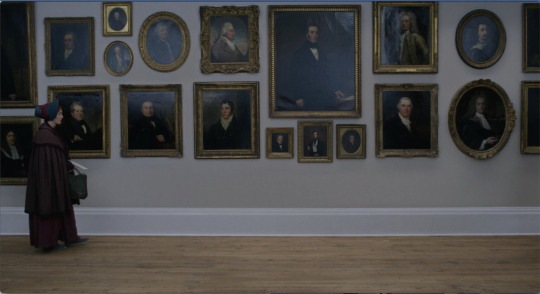

It isn’t just the shift to London or the sudden heavy-handed cinematography that jars the viewer. The final 20 minutes of the film tackles class issues but ignores broader themes of imperialism and racism.
Classism is seen best in Mary’s interactions with Charlotte’s housekeeper. When the housekeeper answers Mary’s knock, she assumes from Mary’s rough clothing that she’s a hired worker. The housekeeper says, “Tradesman’s entrance is around the side. Go all the way back” (1:41:29). After explaining who she is, Mary is shown to the drawing room and Charlotte greets her with a passionate kiss. Mary glances at the housekeeper, but Charlotte says, “Oh, that’s just the maid,”(1:44:23) at which point the housekeeper side-eyes the women and shuts the drawing room door. Class bias goes unchallenged by any of the characters even in light of Charlotte’s relationship with poor, rural, crass Mary. Additionally, there are no Black, Indian, or Egyptian people. At the height of British imperialism, there should be several non-white people, especially once the action moves to London.
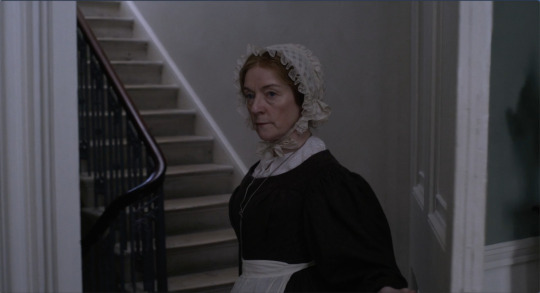
Ammonite does not employ “an anti-imperialist stance that de-privileges the Western queer film canon” (Schoonover & Galt, 2016, p. 15) in part because it fails to address Britain’s imperialism and in part because it, too, uses Western imperialist structures to (unsuccessfully) promote itself. Originally available only in theaters and on Amazon, viewers can now access it through other streaming services such as Hulu and Vudu. All subscription based. All part of the cinema industrial complex.
I enjoyed Ammonite. At least, I enjoyed it the second time. The first time, thinking it would be similar to the 2019 movie Wild Nights With Emily, I convinced my husband and my two daughters, aged 18 and 15, to watch it with me. As a heterosexual-passing pan woman who has been in love with Winslet since the 1995 remake of Sense and Sensibility, I had looked forward to seeing her in a role that more accurately represented me. However, sitting with two of my children I felt my face turn red. In a brilliant parenting moment /s I tried to cover up my embarrassment by saying, “This is important. People with vaginas experience sexual pleasure differently than the movies make it seem. As people with vaginas, we have to advocate for our own pleasure,” at which point my 15 year old ran out of the room, eyes closed, hands over her ears. The 18 year old stayed, but mostly to ridicule my parenting. Two years later, when my daughters feel particularly spicy, they’ll say, “Hey, mom! Remember when you made us watch lesbian porn?”
They echo criticism from the public. One reviewer said, “Serious concerns that a famous lady has been wronged by the Lesbian storyline. Proof/truth? As for the soft porn. Why? Nothing more than eroticism for a very small segment of the population” (Alastair G, Ammonite, 2022). Even though I disagree that the movie is soft porn, and I disagree that we're a "very small segment of the population," I think Alastair hits (unwittingly) on the reason the movie failed. A combination of the slow pace and sex by and for women, two of the aspects that queer the movie, result in an insurmountable barrier for a public that is trained to prefer action and rough-and-ready sex created for the male gaze.

References
Benshoff, H., & Griffin, S. (2010). In Queer Cinema the film reader (pp. 1–15). essay, Routledge. Taylor & Francis Group.
Berger, J. BBC and Penguin. (1972). chapter 1. In Ways of seeing (pp. 7–34).
Canning, I., Sherman, E., O’Reilly F.C. (Producers), & Lee, F. (Director). (2020). The Ammonite [Motion picture]. United Kingdom: Lionsgate.
Clarke, D. (2021, March 26). Ammonite: Even the saoirse ronan-kate winslet sex scenes are too respectable. The Irish Times. Retrieved October 10, 2022, from https://www.irishtimes.com/culture/film/ammonite-even-the-saoirse-ronan-kate-winslet-sex-scenes-are-too-respectable-1.4517920
Duggan, L., & Hunter, N. D. (2006). Chapter 12: Making it perfectly queer. In Sex wars: Sexual dissent and political culture (pp. 149–163). essay, Routledge.
Lodge, G. (2017, January 5). Does Moonlight show gay cinema has to be sexless to succeed? The Guardian. Retrieved October 10, 2022, from https://www.theguardian.com/film/2017/jan/05/does-moonlight-prove-that-gay-cinema-has-to-be-sexless-to-succeed
Na. (n.d.). Ammonite. Rotten Tomatoes. Retrieved October 10, 2022, from https://www.rottentomatoes.com/m/ammonite
Schoonover, K., & Galt, R. (2016). Introduction Queer, World, Cinema. In Queer Cinema in the world (pp. 1–34). Duke University Press.
Schoonover, K., & Galt, R. (2016). Figures in the World: The Geopolitics of the Transcultural Queer. In Queer Cinema in the world (pp. 35-78).
Timar, C. (2020, December 6). Ammonite. CLAPPER. Retrieved October 10, 2022, from https://www.clapperltd.co.uk/home/ammonite
by Bryn Brody

#queermedia#Ammonite#AmmoniteMovie#Saoirse Ronan#Kate Winslet#Lesbian Film#Francis Lee#Movie Review#Mary Anning#Lyme Regis#romance movies
74 notes
·
View notes
Text
259 - Ammonite (with Christina Tucker!)

After Francis Lee's celebrated queer debut God's Own Country, the director leveled up with another gay romance Ammonite, this time with Oscar-pedigreed stars. Kate Winslet stars as 19th century paleontologist Mary Anning opposite Saoirse Ronan as Charlotte Murchison; the two develop a seaside romance of opposites between the gruff Anning and the unfulfilled Murchison. But Lee's follow-up, (originally selected for Cannes) had the unlucky fortune to come out in 2020 amidst a climate unfriendly to a romance more reserved and quiet than expected.
This episode, we talk about the film's unceremonious world premiere at the COVID-impacted Toronto International Film Festival and the film's theatrical run. We also discuss 2017 comparison's between God's Own Country and Call Me By Your Name, Winslet's performance on Mare of Easttown, and the minor controversy over the real woman's unknown sexuality.
Topics also include Sam Levinson's (hypothetical!) dungeon, emotional metaphor animals, and "Harold, they're lesbians!"
Links:
The 2020 Academy Awards
Subscribe to Christina on Substack!
Vulture Movies Fantasy League
Subscribe:
Patreon
Spotify
Apple Podcasts
Google Play
#Ammonite#Francis Lee#Kate Winslet#Saoirse Ronan#James McArdle#Fiona Shaw#Gemma Jones#Alec Secareanu#Best Actress#Best Supporting Actress#LGBTQ#Academy Awards#Oscars#movies#Harold They're Lesbians
6 notes
·
View notes
Text
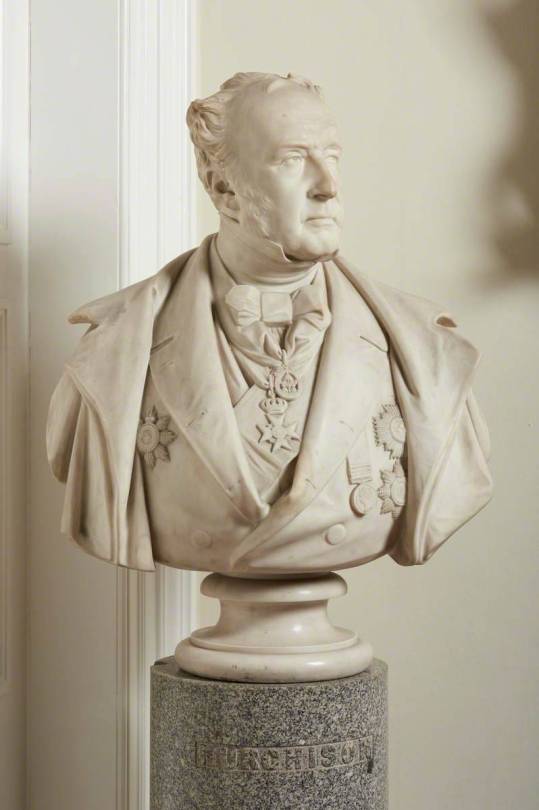



On October 22nd 1871, Sir Roderick Murchison, the Scottish geologist, died.
Murchison was born in Tarradale, Easter Ross, and was educated at Durham Grammar School and the Royal Military College. When Murchison met his future wife Charlotte Hugonin in 1815, it was she who was studying science, Murchison being far more interested in hunting and horses. After many years of encouragement from Charlotte and latterly Sir Humphrey Davy, the Murchisons moved to London in 1824 where he began to attend lectures on geology and chemistry.
Murchison’s most important geological achievements were as a stratigrapher, particularly his work determining the order of Palaeozoic rocks. His researches in Wales in the 1830s with his friend Adam Sedgwick identified the oldest (then known) fossil bearing rocks. Murchison called his system the ‘Silurian’ after the ancient indigenous tribe. Sedgwick named his ‘Cambrian’ after the Latinised version of Cymru, the Welsh for Wales. The Devonian system, the intermediate between the Carboniferous and Silurian, was defined by the two men in 1839. Finally, Murchison’s travels around the Russian empire in the early 1840s led to his description of a third system, the Permian (named after the province of Perm in Russia) which marked the end of the Palaeozoic era.
Murchison attained many honours in his lifetime. He was awarded a KCB in 1843, knighted in 1846 and made a baronet in 1866. In the bust as seen in pic 2, Murchison is wearing two of the many foreign honours bestowed upon him. The star is the Russian Order of St Stanislau, 1st Class, the cross is the Danish Order of Dannebrog
As well as the honours during his life, after his passing he had towns, rivers and islands around the world named after him – and a crater on the moon.
6 notes
·
View notes
Text
Popular Pairing List Update
The following pairings have more than 10 recent posts in their pairing tag, and are therefore too popular to be posted on Rarepair Thursdays:
Andie Bustamante x Liv Rooney (Liv and Maddie)
Bernadetta von Varley x Petra Macneary (Fire Emblem)
Bess Francis Till x Miss Audrey (Snowpiercer)
Carson Shaw x Greta Gill (Amazon A League of Their Own)
Darcy Olsson x Tara Jones (Heartstopper)
Dorothy Gale x Ruby (Once Upon A Time)
Ei x Yae Miko (Genshin Impact)
Gideon Nav x Harrowhark Nonagesimus (Gideon the Ninth)
Jester Lavorre x Yasha Nydoorin (Critical Role)
Ji yeong x Kang Sae byeok (Squid Game)
Kate Bishop x Yelena Belova (Marvel Cinematic Universe)
Sarah Alder x Tally Craven (Motherland: Fort Salem)
Taissa Turner x Vanessa Palmer (Yellowjackets)
The following pairings have been posted less frequently recently, and have therefore been removed from the popular pairing list:
Abby Holland x Harper Caldwell (Happiest Season)
Aino Minako x Hino Rei (Sailor Moon)
Alyssa Greene x Emma Nolan (The Prom)
Amae Rali x Elida Al Feyr (Vagrant Queen)
April Stevens x Sterling Wesley (Teenage Bounty Hunters)
Asahina Aoi x Ogami Sakura (Dangan Ronpa)
Bernadetta von Varley x Edelgard von Hresvelg (Fire Emblem)
Bonnie Bennett x Nora Hildegard (The Vampire Diaries)
Carrie x Flynn (Julie and the Phantoms)
Charlotte Murchison x Mary Anning (Ammonite)
Daphne Blake x Velma Dinkley (Scooby Doo)
Debbie Ocean x Lou (Ocean’s Eight)
Elphaba Thropp x Glinda Upland (Wicked)
Elsa x Honeymaren (Disney Princesses)
Gwendolyn Briggs x Mildred Ratched (Ratched)
Max Baker x Sophie Sanchez (Ginny & Georgia)
Michael Burnham x Philippa Georgiou (Star Trek: Discovery)
Neopolitan x Yang Xiao Long (RWBY)
Nyssa al Ghul x Sara Lance (Arrow)
#femslashrevolution#femslash revolution#wlw#femslash fandom#wlw ship#popular pairing list#mod post#Rarepair Thursdays
8 notes
·
View notes
Text
Just Saoirse Ronan pressing random piano-keys in movies and their trailers
Foe (2023):

Ammonite (2020):

25 notes
·
View notes
Text



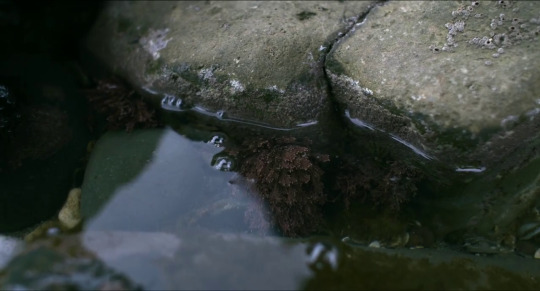


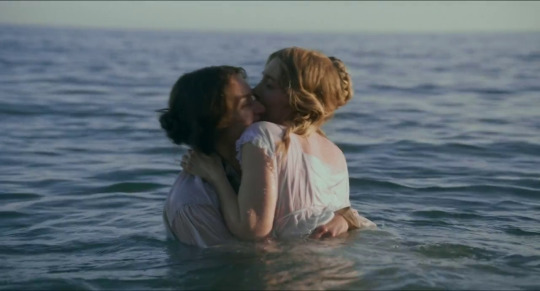




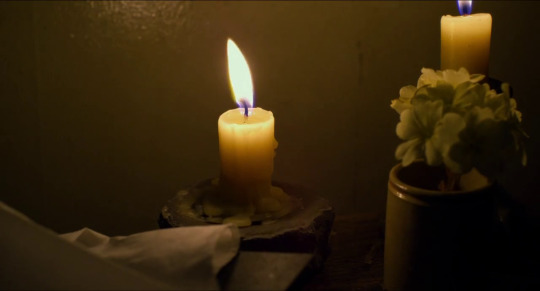
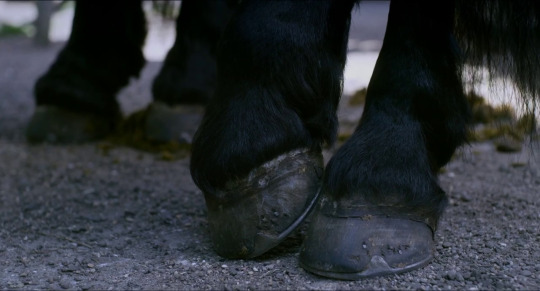



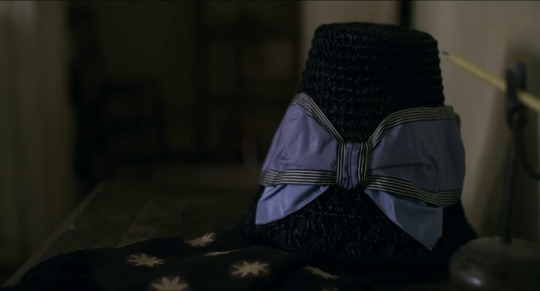


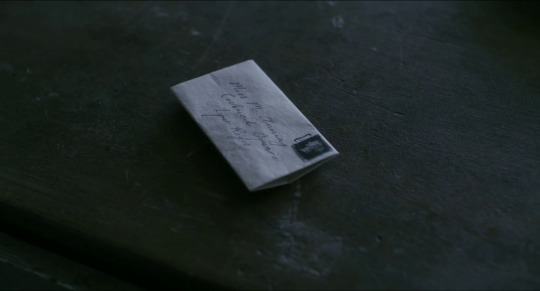



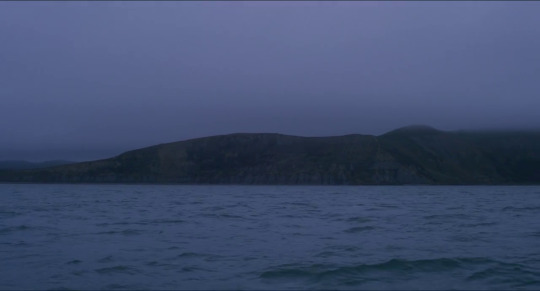
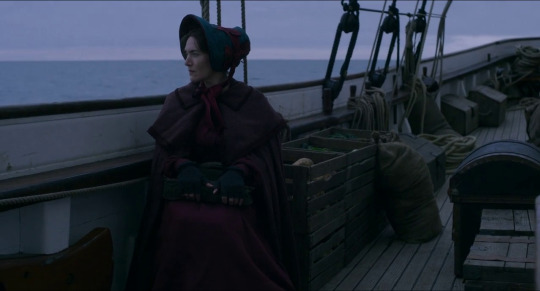
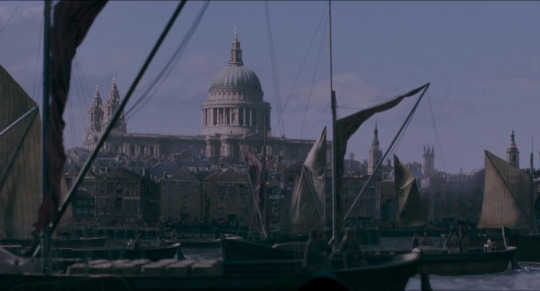
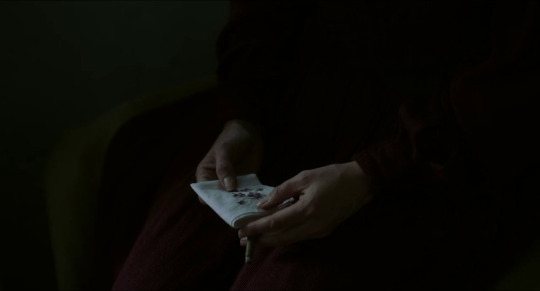
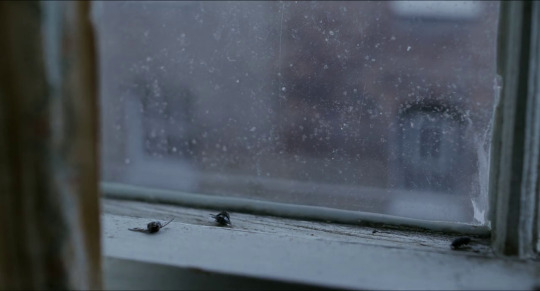
57 notes
·
View notes
Text

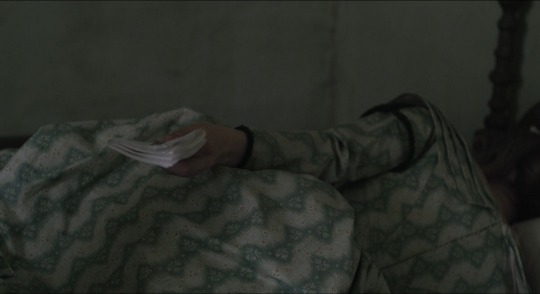


the handkerchief in ammonite (2020) dir. francis lee
48 notes
·
View notes
Text
You were the most fascinating person there tonight. And I think the most beautiful.
Charlotte Murchison to Mary Anning
#ammonite#bro i legit cried at this line#and the entire scene#like i relate to mary so much#and i think ive found someone equal to her charlotte#but its still v scary#quotes
2 notes
·
View notes
Text

Mary Anning: No. No children.
Charlotte Murchison: I’m sorry.
Marry Anning: For what? My mother had ten. I remember six of them dying. And two before me. Eight babies dead. Each one taking something of her when they went. I had my work. I didn’t need children as well.
3 notes
·
View notes